Today (3/9/2025) I submitted a Member Question for the next RBWM Council Meeting scheduled for 23/9/2025). The question relates to who is responsible for the structure. The reason I ask is because I am not satisfied that the inspection and maintenance of this structure is adequate – consequently I need to know who is responsible. The story goes like this: This is the Myrke footbridge (Number 19) also known as Michael’s bridge. On 30/6/2025 I visited the timber structure for the first time this year.
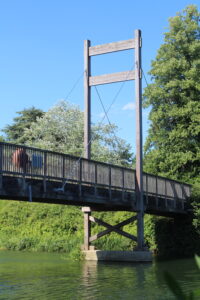
It is impossible to view the sides and underside of the structure due to overgrown shrubbery. A boat, drone and cherry-picker may be helpful. The Myrke footbridge (number 19) over the Jubilee River is located here.
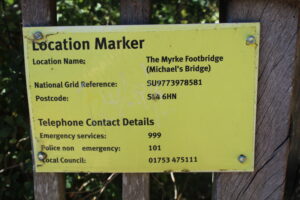
Renamed Michael’s Bridge after a 2015 tragedy
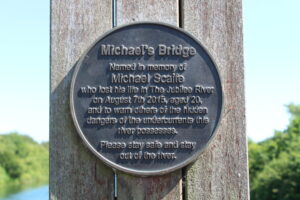
The decking needs some attention
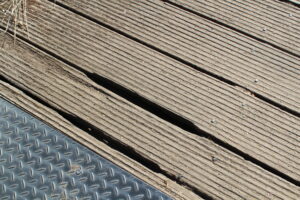
The construction of the Myrke footbridge differs slightly from the failed Berry Hill, Ashford Lane and Black Potts timber footbridges. Firstly there are four adjustable stainless steel suspension rods on each of two timber towers.

It should be noted that the vertical timbers on the towers are separating – the light is clearly visible between the timbers.
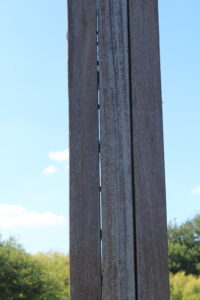
This is a better view of the gap between the individual tower timbers. The horizontal fastenings are clearly visible through the gap.
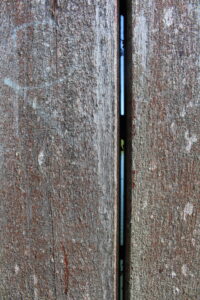
The horizontal fastenings appear to be a series of metal rods with painted ends (probably stainless steel and approximately 20mm in diameter) hammered into stopped holes in the timber. These fastenings may be capable of resisting shear forces but are unable to resist tension thus allowing the separation of the timbers over time.

Two views of the fastenings that connect the vertical timbers to create the towers are shown below. Note the embedded steel plates (two red vertical lines) and the 64 small (probably 10mm diameter stainless steel rods) used as fasteners.
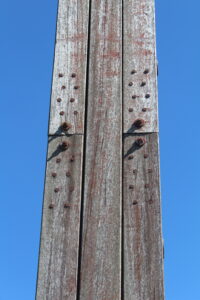
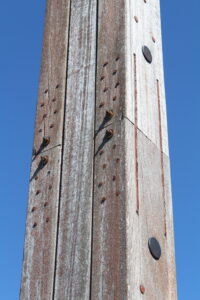
Secondly – the two main supporting beams on the underside of the decking are of laminated construction. I was unable to get any closer due to the shrubbery. I would not be surprised to find significant longitudinal cracking and also that the ends of these beams had rotted in a similar manner to the other bridges.

It also appears that some structural strengthening has already been implemented on the diagonal crossmembers. Look closely and you will see overlaid timbers bolted into position
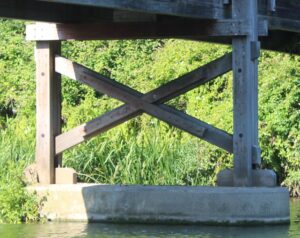
In conclusion – I requested an AI assessment of the multiple local timber footbridge issues. The answer is as follows:
Common Failing Pattern
These bridges share a pattern where they were built as cost-effective timber solutions (Temple in 1989, Berry Hill around the same era) but have systematically failed after 30-35 years rather than their intended 50+ year lifespan. The combination of river environment exposure, inadequate preservation treatment, and insufficient maintenance budgets has created a recurring infrastructure crisis requiring expensive emergency closures and replacements.
The fundamental issue appears to be that the initial cost savings of timber construction are offset by shortened operational life and high replacement costs, making them poor long-term value compared to more durable materials.
(Below – added 28/7/2025)
When is a Timber footbridge Inspection Report not what it seems to be? ANSWER – When you read it!
END


3 thoughts on “The Myrke Footbridge (Michael’s Bridge) Number 19”
Comments are closed.